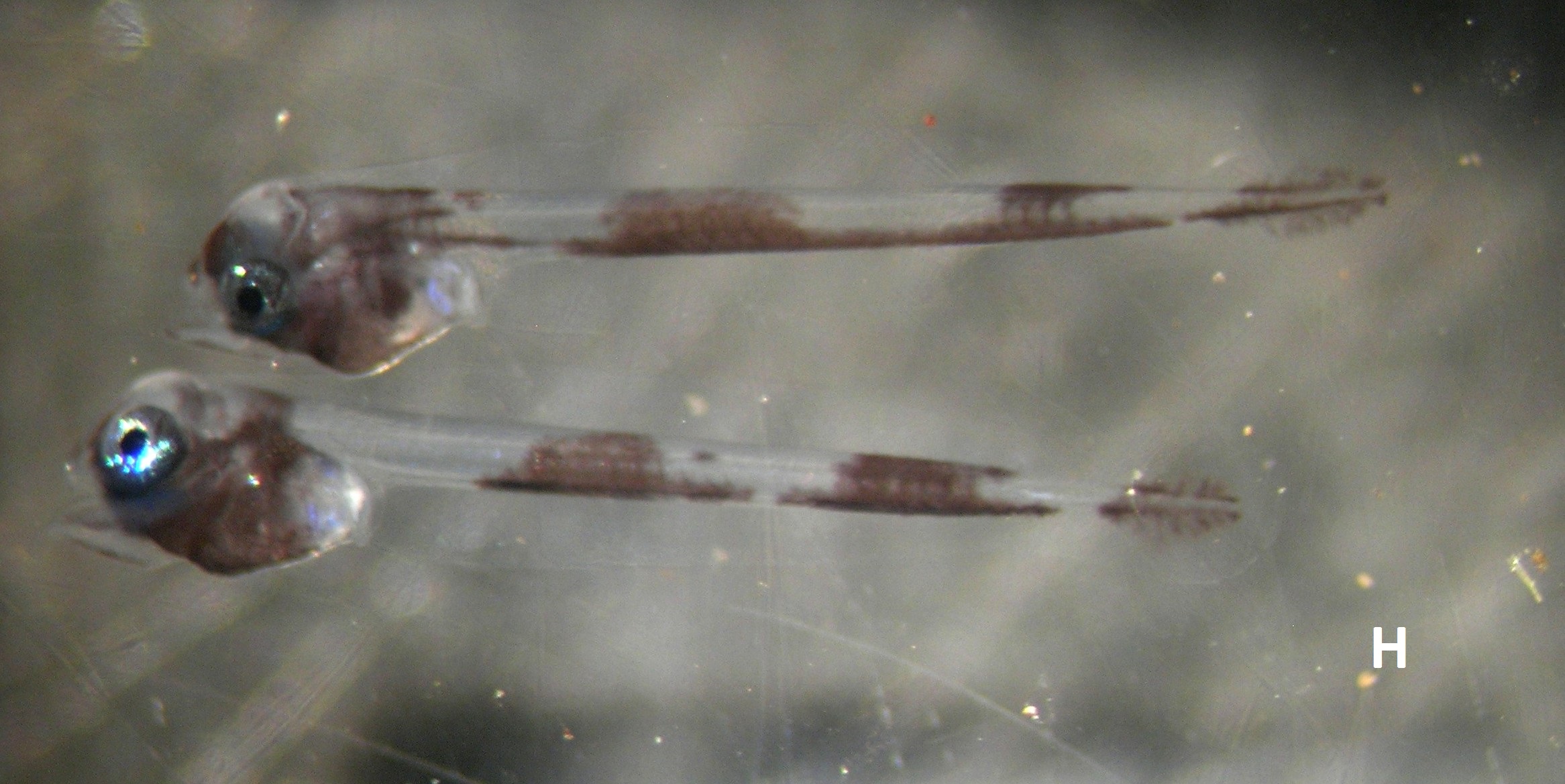Caristiidae: L I A1
Caristius sp. &Caristius groenlandicus Jensen, 1942








|
Egg diameter in µm |
Number of oil globules |
Diameter of oil globule in µm |
Yolk texture |
Perivitelline space |
Position of oil globule at hatch |
Gut length at eye- pigment stage |
Myomeres |
|
1800-1970 |
1 |
530-650 |
clear |
narrow |
stern |
28% of NL |
ca.35 |
Egg: This large egg with its misty yolk and huge brown-amber oil globule (A), is matched in size by only one other egg, Lichia amia (EIA1), but the latter has a segmented yolk. As the embryo develops, the black pigment patches, and oil globule position further distinguish between the two (B, C & D). Incubation period is uncertain, but exceeds 4 days.
Larva: The early larva hatches with lightly pigmented eyes, a strip of black pigment dorsally, extending into the dorsal finfold, and black pigment both midtail and in the caudal finfold (E). By day 5, the pigment has clustered into1 midtail patch (G). The 3-day larva (F) is probably a second species. E: NH, F: 3 days, G: 5 days (25°C).
The size of this egg, combined with the body pattern of the elongate but short-gut larva, and the myomere count, are consistent with it being a caristiid. Marcus (2006) illustrates the egg and early larva of Caristius maderensis. There are two species of Caristius known from off Durban (Heemstra 1986f), which are rare in collections. Thirteen hatched larvae have been barcoded (BOLD), 7 indicating 1 species, while another 6, recognised as different due to the double dark patches of F above, have matched the barcode of an adult C. groenlandicus, from the South African west coast. The two species are easily separated at the larval stage; G above is Caristius sp., while F & H are C. groenlandicus. The former is by far the more common off Park Rynie.


| Linked samples | Offshore | Inshore |
| Eggs | 105 | 21 |
| Hits | 52 | 16 |
In the Park Rynie area, both species are clearly winter spawners (blue graph). The egg was not seen in the DHM samples, but at Park Rynie, it has maintained a fairly steady presence (white graph). Most of these eggs in the Park Rynie linked samples, were offshore (83%), but numbers are too low to be reliable. I would have expected an even higher offshore percentage for such oceanic species. However, considering the long development time, the eggs have days of drifting before they hatch. See Section 7.3 and Table 1 of the Introductory Notes, for more information on the linked samples.